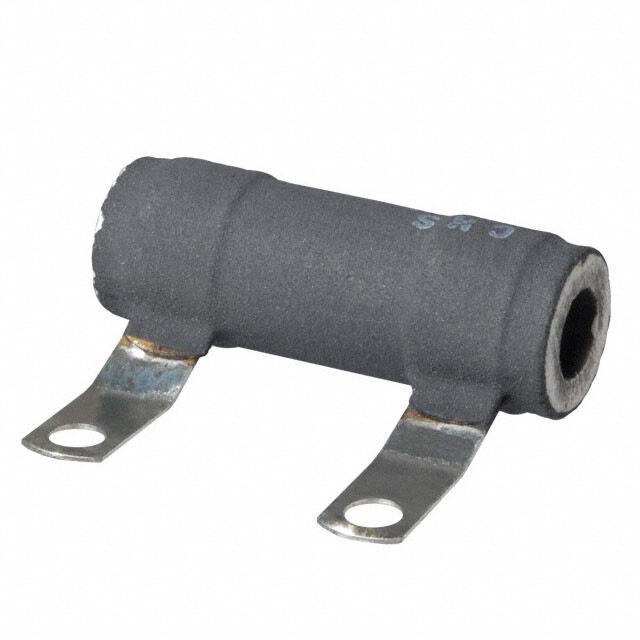This Product Selection Guide contains information to help select products in the Specialized resistors category on DigiKey.com
Products in the specialized resistor family are adapted for particular purposes and often have uncommon form factors as a result. Examples include resistors designed to fit across the leads of large electrolytic resistors for safety discharge purposes, liquid-cooled resistors, and low resistance shunts for use in relatively high current applications such as automotive electrical systems.
SelectionCharacteristics
Type: Typically refers to what the resistor was designed to do.
Available Types
Shunt- A device which allows electric current to pass around another point in the circuit by creating a low resistance path.
Ammeter Shunt- Allows the measurement of current values too large to be directly measured by an ammeter. In this case the shunt, a resistor of accurately known resistance, is placed in series with the load so that all the current to be measured will flow through it. The voltage drop across the shunt is proportional to the current flowing through it and since its resistance is known, a meter connected across the shunt can be scaled to directly display the current value.
Bleeder Resistor- A resistor placed in parallel with a high-voltage supply for the purposes of discharging the energy stored in the power source’s filter capacitors or other components that store electrical energy when the equipment is turned off.
Temperature Sensitive Resistor- Has a high enough temperature coefficient of resistance, indicating variation of electrical resistivity with temperature.
Applications: The type of environment or system that the resistor is rated for.
Composition: Indicates the basic material type/construction method used to construct a product’s resistive element.
Resistance: Characterizes the nominal resistance of a current path through a device.
Tolerance: Characterizes the extent of permitted variability of overall device resistance among samples of a given part number, resulting from variations in manufacturing.
Power (Watts): Identifies the amount of heat that can be continuously dissipated by the resistive element without damaging the device. Measured in Watts (W) and typically based on the size of the device.
Temperature Coefficient: The temperature coefficient of resistance (TCR) is a constant that represents the resistance change per degree Celsius of temperature change over a specific temperature range; it’s expressed as ppm/°C (parts per million per degree centigrade).
Operating Temperature: Recommended operating temperature, typically given in a range or as a maximum. Exceeding these temperatures may affect performance or damage the device and/or other system components.
Mounting Type: Indicates how the device is attached.
ProductExamples
| MFR PART # | CMS16CME2K000JE |
|---|---|
| DIGIKEY PART # | CMS16-2K-ND |
| MANUFACTURER | Vishay Huntington Electric Inc. |
| DESCRIPTION | 2 kOhms ±5% 16W Bleeder, Capacitor Specialized Resistor Wirewound ±260ppm/°C Capacitor, 22mm Pitch |
| DATASHEET | Click Here |
| MFR PART # | WSBS8518L0500JTP3 |
|---|---|
| DIGIKEY PART # | 541-10229-ND |
| MANUFACTURER | Vishay Dale |
| DESCRIPTION | 50 µOhms ±5% 36W Shunt, Battery Specialized Resistor Metal Element ±200ppm/°C Shunt Fixture, 60mm Pitch |
| DATASHEET | Click Here |
| MFR PART # | ERA-V15J561V |
|---|---|
| DIGIKEY PART # | P560CFTR-ND - Tape & Reel (TR) |
| MANUFACTURER | Panasonic Electronic Components |
| DESCRIPTION | RES TEMP SENS 560 OHM 5% 1/16W |
| DATASHEET | Click Here |
SchematicSymbol
![]()
Schematic symbol courtesy of Scheme-it. Please see their website for more information and symbols.
MediaLinks
Videos
WEbinar Powered by DigiKey: Current Sense is Easy
Applications of Current Sense Resistors
Features of Current Sense Resistors
More Videos on Current Sensing Resistors
Articles
How to Select and Apply Smart Current Sensing and Monitoring Technologies (Instead of Fuses)
Fundamentals of Current Measurement: Part 1
More Articles on Current Sensing Resistors
Product Training Modules
Product Training Modules on Current Sensing Resistors
Blogs
How Current-Sense Resistors Enable
TechForum
Selecting Bleeder Resistor Values For Your Application
Property of Chassis Mount Current Sense Resistor



